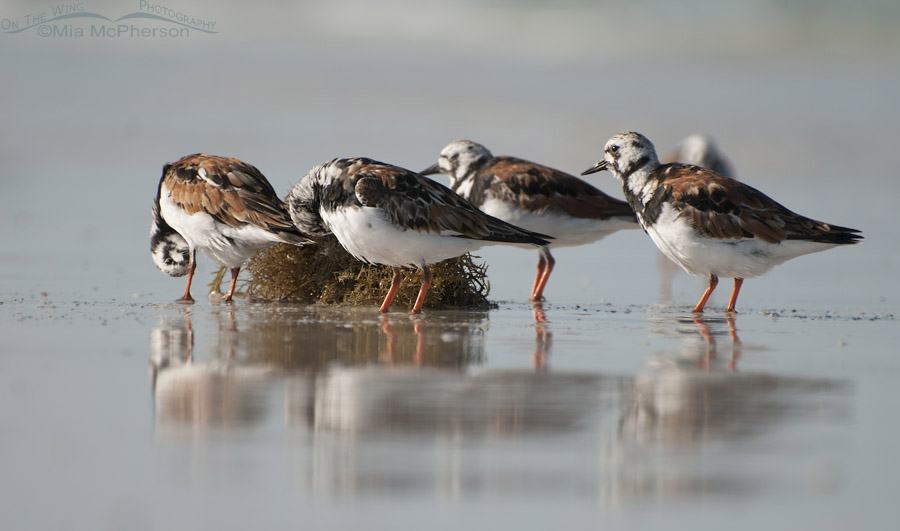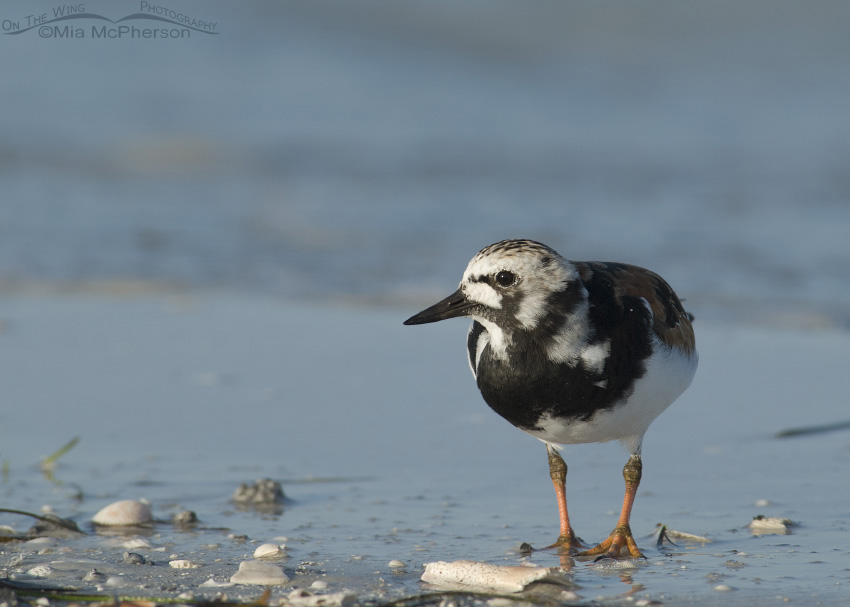 Small flock of Ruddy Turnstones- Nikon D200, handheld, f5.6, 1/1000, ISO 200, Nikkor 70-300mm VR at 300mm, natural light
Small flock of Ruddy Turnstones- Nikon D200, handheld, f5.6, 1/1000, ISO 200, Nikkor 70-300mm VR at 300mm, natural light
Some Ruddy Turnstones migrate through Utah in the spring starting the last week of April until around the end of May and can be seen when they feed to refuel for the rest of their journey to the high Arctic to breed. They are beautiful, colorful shorebirds with calico patterns in breeding plumage. When I lived in Florida I photographed them during the fall, winter and early spring along the Gulf coast.
One of the amazing things about these shorebirds is just how quickly the chicks develop after hatching and how soon they migrate from their breeding grounds.
Ruddy Turnstone chicks leave their nests within a day of the last egg of the brood hatching. They have downy feathers at that point and they feed themselves while the adults watch over them.
 Ruddy Turnstone profile – Nikon D200, handheld, f7.1, 1/500, ISO 200, Nikkor 80-400mm VR at 400mm, natural light
Ruddy Turnstone profile – Nikon D200, handheld, f7.1, 1/500, ISO 200, Nikkor 80-400mm VR at 400mm, natural light
The female Ruddy Turnstones usually leave the chicks with the male at about 10 to 14 days. The males then look after the chicks until they fledge.
Ruddy Turnstone chicks fledge (begin to fly) at only 19 to 21 days of age at which point the male turnstones leave their young and head towards their winter grounds. Imagine if human babies developed that quickly!
What is really fascinating to me is that within two days of fledging Ruddy Turnstone chicks embark on their first migration to their wintering grounds. That is when the young turnstones are just about three weeks of age and they may fly as far as 6500 miles from their breeding grounds to their nonbreeding grounds without an adult to guide them.
No wonder the American Birding Association picked them for the 2017 ABA Bird of the Year!
Birds just flat out captivate me.
Life is good.
Mia
Click here to see more of my Ruddy Turnstone photos plus facts and information about this species.


Thank you all for your thoughtful and informative comments.
A beautiful bird and I especially like the first image. Thanks for the images and the info.
They do grow up fast. They need to.
And yes, birds ARE captivating. And intriguing. And fascinating.
Lovely, such personality!
Thank you for today’s lesson.
I photographed one last Tuesday and it’s good to know the difference between breeding and nonbreeding plumage.
Here in Portugal we name this bird “Rola do mar”.
Thanks Jorge. I went to Portuguese online translator to find: “It rolls of the sea” which also rolls off tongue.
What I like best about these cute, pretty birds is their name…I love saying it….it just rolls off the tongue!!!
Beautiful bird, I hope to see one in Utah.